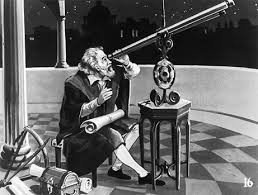Scientific Revolutions: Relativity
This course examines 19th and 20th-century modifications of Newtonian ideas of space, time and interactions. We focus on the concepts and consequences of the theory of relativity: length contraction, time dilation, the relativity of simultaneity, the equivalence of mass and energy, new approaches to gravitation, and black holes. We also explore the impact of relativity outside science. Readings from Einstein, Minkowski, Holton, Kuhn and others. Prerequisite: Physics 123. (Meets the Critical Perspectives: Scientific Investigation of the Natural World requirement.) (Meets the Critical Perspectives: Quantitative Reasoning requirement.) 1 unit - DiCenzo. Meets the Critical Perspectives: Scientific Investigation of the Natural World requirement. Meets the Critical Perspectives: Quantitative Reasoning requirement. (Not offered 2022-23).
Prerequisite: Physics 123.
Degree requirement — Critical Perspectives: I, Critical Perspectives: Q
1 unit
Previously Featured Offering

We’ll spend this first block studying the beginning of modern science, one of the defining characteristics of Western society. We’ll begin by looking at what came before—Aristotelian physics and its development through the Middle Ages. Then we’ll look at challenges to Aristotelian physics, focusing on the pivotal figure of Galileo. Finally, we’ll see the new physics in all of its glory, as developed by Isaac Newton. At every stage we’ll look at theoretical and experimental developments, study the important figures involved, and look at the cultural impact of these great discoveries. Our primary subject matter will be motion—that of terrestrial objects and that of the heavenly bodies. We will study the development of science in Western Europe, but we’ll notice how the sciences of other cultures impacted and were impacted by these developments in Europe.


